As all of you students in my Executive Master of Sustainability Leadership communications course know, a universal structure to storytelling pervades our lives.
We see it in the movies we watch, the music we listen to, the plays we attend and the Super Bowl TV spots we laugh at.
My hands down favorite from Sunday’s big game was Dorito’s “Ultrasound” spot.
Let’s put it to the Story Cycle test
For those of you new to the Story Cycle, it is a 10-step process, inspired by American mythologist Joseph Campbell’s Hero’s Journey universal story template, that brands can use to create more compelling stories that sell.
The Story Cycle is particularly useful for B2B marketers who want to connect the offering of their professional services firm on a very human level with its customers. B2C marketers have it a little easier, because the smart ones use storytelling, versus features and benefits blathering, to connect with their customers and standout in our noisy world.
Doritos typically does this pretty well, not through their ad agencies, but through the winners of their Super Bowl TV contests.
It’s funny how when a brand turns its messaging over to the masses to create, they typically default to telling stories? (See the trend here, B2B marketers?).
So let’s take a look and see if Doritos’ “Ultrasound” TV commercial follows the 10-step Story Cycle process.

Step 1: Backstory
The spot opens on an ultrasound already in progress creating the setting for our story.

Step 2: Heroes
We meet the proud parents to be, which we can relate to as viewers. We get to live vicariously through them for the next 30 seconds, laughing at ourselves as we relate to how they’re reacting to what is typically a stress-inducing procedure.
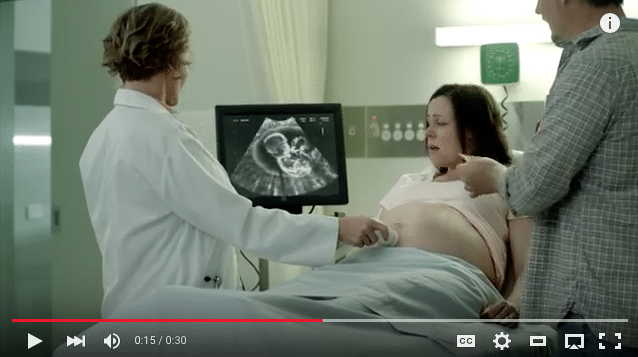
Step 3: Stakes
What’s at stake in this story is the the universal concern for the health of the baby. We can all relate to this basal human emotion.
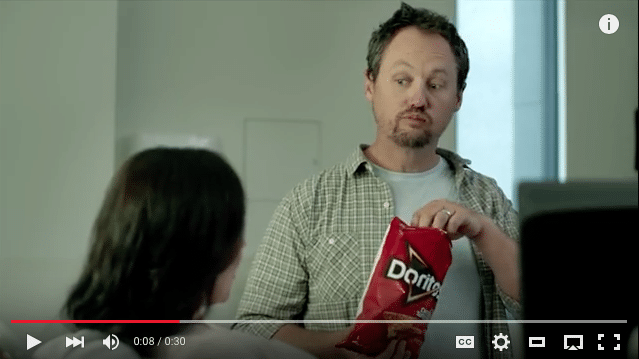
Step 4: Disruption
Dad, on the other hand, is surprisingly preoccupied with his delicious Doritos.
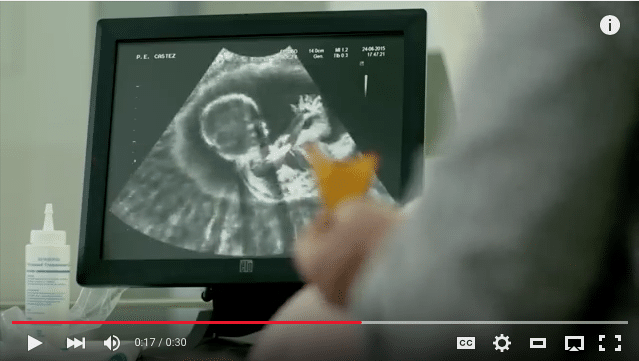
Step 5: Antagonist
He is the antagonist in this story, as he uses his Doritos chip to play keep away with the fetus, while annoying his wife.
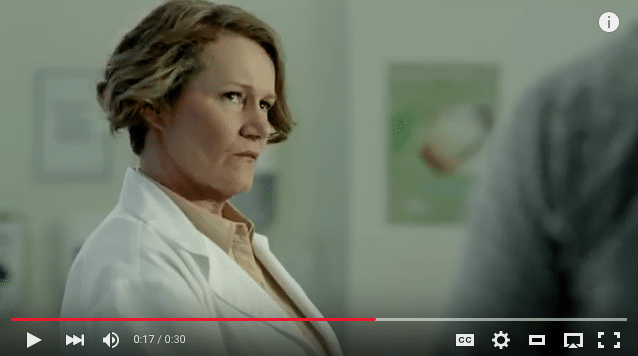
Step 6: Mentor
The doctor is not amused.
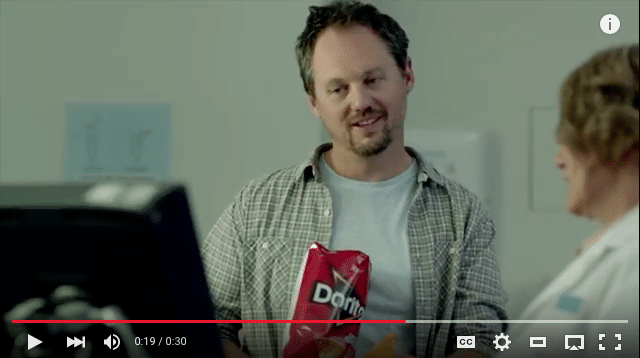
Step 7: Journey
The journey continues as Dad makes the baby bump its head in the womb trying to grab the chip until mom as had enough.
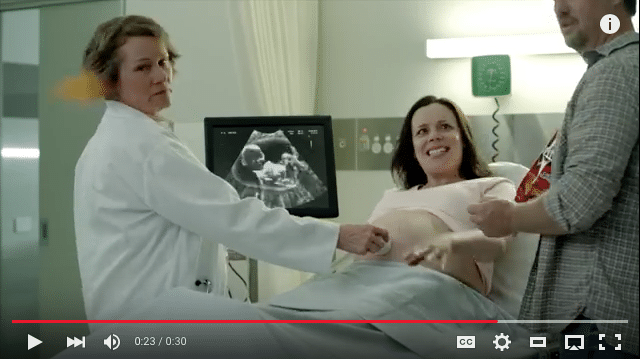
Step 8: Victory
She grabs the chip and flings it across the room. But, in true Hero’s Journey story form, the plot thickens as the situation gets worse before it gets better. Although she successfully disarms her husband from his chip, she inadvertently sets a new development into motion.

The baby, in its quest for the chip, sees it flying by and exits the womb to go after it…
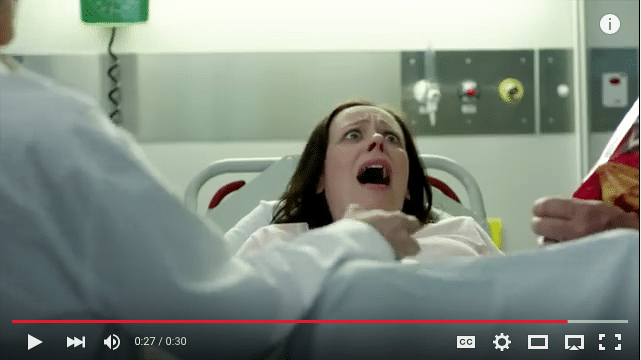
much to the surprise of mom…

as dad and doc shriek in horror, but a funny kind of horror.

Step 9: Moral
And then the moral of the story is delivered: Doritos are For The Bold. In this case, our brave child who just jettisoned himself into the snack chip-filled world, God help him.
Step 10 of the Story Cycle is about creating a ritual around the use of the brand. This is where we viewers/consumers become part of the story. Doritos has captured our attention as we live and laugh through this spot, all in an effort to build ritualistic use of the product.
Director Peter Corstairs created this winning spot in the Doritos Crash the Super Bowl Challenge. Here is a behind the scenes look at how they created the playful fetus.
The universal story structure the Story Cycle is based on can be found in all compelling communications. This is just one quick example.
Imagine what could happen if you use an intentional and pragmatic approach to crafting and telling your stories. No matter whether they are a sales pitch, powerpoint presentation, employee engagement communications, B2B marketing campaign or a Super Bowl spot, you will connect on a human level like never before and move people to action.
Just like junior here.




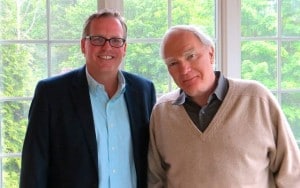






at 4:25 pm
Watched the Super Bowl while on a ski-trip in Canada, where we didn’t get any “good” commercials. On my return, I heard about this Doritos commercial, but what I heard was the complaining from the Pro-Abortionists, and how they didn’t appreciate Doritos humanizing a fetus … fer crying out loud. I understand if you’re trying to sell a political candidate, or a political theory like global warming, you really have to be partisan, but what length do you take to steer clear of controversy when trying to sell junk food? Do you think our society’s hypersensitivity and political correctness is a fad, or are we doomed to live with it? (and by the way, I thought the commercial was very clever too)
at 5:11 pm
Unfortunately, our educational system, corporate cultures, social constructs, political correctness, and now the trend of so-called micro aggression spurred on by entitled kids and their helicopter parents are conspiring to squelch the storyteller in all of us. Lighten up folks. Like you said, Pat, it might be different if it was in the political arena. Bt they’re just selling snacks. Jeez.